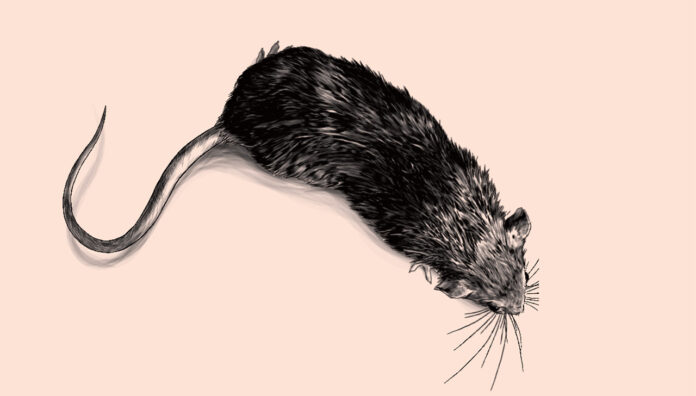Agatha Christie loved strychnine. It starred in her debut novel, The Mysterious Affair at Styles. Thanks to her World War I experience as a hospital dispensary volunteer, and her training as an apothecary’s assistant, the novel received a rave review in The Pharmaceutical Journal.1–3
‘This novel has the rare merit of being correctly written – so well done, in fact, we are tempted to believe that the author had pharmaceutical training.’1
Arthur Conan Doyle, Alfred Hitchcock and more recently Stephen King also despatched victims with strychnine.4,3
Why? Perhaps because the poison’s dramatic symptoms fit murder plots: violent and excruciating convulsions, facial contractions, and arching of the back. Symptoms can hit within 15–30 minutes of ingestion of as little as 30 mg/kg.1 Death can occur within 30 minutes due to asphyxiation from continuous spasms of the respiratory muscles.4–7,10,11
‘Death can occur within 30 minutes due to asphyxiation from continuous spasms of the respiratory muscles.’
What is strychnine?
Strychnine is a bitter-tasting, odourless, white crystalline powder found in seeds of the Strychnos nux-vomica and S. ignatii trees, native to India and Southeast Asia. It also occurs in three Australian species: S. lucida, S. psilosperma and S. minor.4–9 Strychnine (C21H22N2O2) is a complex molecule. Work on its structure won Robert Robinson the 1947 Nobel Prize. Robert Woodward won the 1954 prize for synthesizing it.3,15
How it works
Strychnine is an alkaloid that excites the central nervous system. It acts as a selective competitive antagonist, blocking the inhibitory effects of glycine at the glycine receptors, causing increased muscular activity.6,16
Strychnine goes global
Historically, people in India, China and Japan used the seeds as a gastric medicine. Controlling pests, an application picked up by rat-intolerant sailors aboard 16th century trading ships, was another use.1,10,11 The sailors’ solution took off, and across Europe and the US, rodents, dogs, cats, gophers, ‘vermin’ of all species – including Homo sapiens – were targeted.1,12 Australia’s colonial graziers used it to protect sheep from hungry dingoes. By 1852, controlling unwanted wildlife was mandatory.13,17
In 1818, chemists Joseph-Bienaimé Caventou and Pierre-Joseph Pelletier extracted strychnine crystals from S. nux-vomica, which revolutionised toxicology.3,5,13
It increased strychnine’s use for intentional suicide and homicide, not to mention as a performance pick-me-up. For instance, Thomas Hicks won the 1904 Olympic Marathon thanks to a mid-race drink of strychnine sulphate and brandy. It wasn’t banned then, but it was in 1992 and 2016 when athletes got caught.1,4,14
Surprisingly, the increased supply also encouraged the use of strychnine for human respiratory, circulatory and digestive maladies.11
Today
Strychnine, still used as a pesticide, was banned in the European Union in 2016, and is controlled where allowed. Use in Queensland and Western Australia is restricted to protect biodiversity.9,10,12,16 And in humans? Banned, although it’s been found mixed with “street drugs” like hallucinogens, cocaine and heroin.4,6,16
Agatha, are you listening?
References
- Bradbury N. A brief history of strychnine, the poison of choice for Agatha Christie, Arthur Conan Doyle, and scores more—but why? CrimeReads 2022.
- Twilley N. Agatha Christie and the golden age of poisons. The New Yorker 2015.
- Drahl C. What you need to know about strychnine, the poison that cost a Rio weightlifter his medal for doping. Forbes. 2016.
- Otter J, D’Orazio JL. Strychnine Toxicity. StatPearls [Internet]. 2021.
- Britannica. Strychnine chemical compound.
- Gupta RC, Lasher MA, Doss RB, et al. Chapter 17 – Skeletal muscle toxicity biomarkers in Biomarkers in Toxicology. Academic Press;2014. p. 291–308.
- Nickson C. Strychnine poisoning. Life in the Fastlane. 2020.
- Gupta RC, Crissman JW. Safety assessment including current and emerging issues in toxicologic pathway in Volume II: Haschek and Rousseaux’s Handbook of Toxicologic Pathology. Academic Press; 2013. p. 643–4.
- Queensland Government. Wild dog facts: Strychnine. 2016.
- Izawa K, Amino Y, Kohmura M, et al. Chemical Ecology in Comprehensive Natural Products II. Elsevier;2010. p 631–71.
- Wood DM, Webster E, Martinez D, et al. Case report: Survival after deliberate strychnine self-poisoning, with toxicokinetic data. Crit Care 2002;6(456). Epub 2002 Jul 10.
- Ujváry I. Chapter 3 – Pest control agents from natural products in Hayes’ Handbook of Pesticide Toxicology (Third Edition). Academic Press; 2010. p. 119–229.
- Philip JM. How Australia made poisoning animals normal. The Conversation. 2019.
- Harkup K. The cocktail of poison ad brandy that led to Olympic gold. The Guardian. 2016.
- Learn J. How rat poison helps chemists win Nobel Prizes. Inside Science. 2021.
- Aronson JK (ed). Strychnine in Meyler’s Side Effects of Drugs (Sixteenth Edition). Elsevier; 2016. p. 500.
- Government of Western Australia. Department of Primary Industries and Regional Development. Strychnine.



 John Jones MPS, pharmacist immuniser and owner of My Community Pharmacy Shortland in Newcastle, NSW[/caption]
John Jones MPS, pharmacist immuniser and owner of My Community Pharmacy Shortland in Newcastle, NSW[/caption]


 Debbie Rigby FPS explaining how to correctly use different inhaler devices[/caption]
Debbie Rigby FPS explaining how to correctly use different inhaler devices[/caption]




 Professor Sepehr Shakib[/caption]
Professor Sepehr Shakib[/caption]

 Lee McLennan MPS[/caption]
Lee McLennan MPS[/caption]
 Dr Natalie Soulsby FPS, Adv Prac Pharm[/caption]
Dr Natalie Soulsby FPS, Adv Prac Pharm[/caption]
 Joanne Gross MPS[/caption]
Joanne Gross MPS[/caption]





